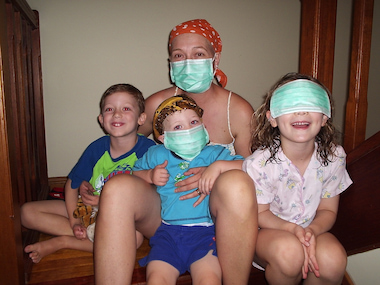Expert Series: physiotherapist Julie Allen works with cancer patients to improve quality of life and survival
When Julie Allen was diagnosed with lymphoma as a young professional mum, she thought, ‘right, I’ll have chemo, get better, and go back to work’. But after completing treatment, she literally felt “stripped bare”.
And it took her “a good two years” to get back her “mojo”, despite the skills and experience she had acquired as a physiotherapist.
“For me, the most difficult phase was post-treatment. I felt more unwell, overwhelmed, and affected by the treatment after treatment than when I was on treatment.”
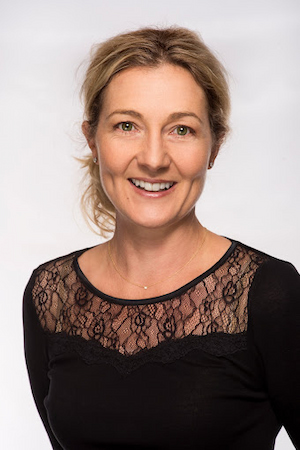
Julie read a lot and talked to lots of people and realised there was a real lack of knowledge in this area at that time, and a real lack of people helping people like her who were coming out the other side of cancer.
That’s when she made it her mission to help change that.
Julie Allen’s background and experience
When Julie finished school and was considering her career path, her goal was “to help people long-term”. She started studying medicine but quickly realised it would take too long to complete that degree.
“I thought ‘what else can I do?’ and physiotherapy ticked a lot of boxes,” said Julie, 51, of Brisbane.
After graduating with first class honours and winning an award for clinical excellence, she “went off into the world of physiotherapy” and became heavily involved in sports practise. This saw her working with Queensland Netball and travelling with the Firebirds and state representative teams.
Then she was asked to travel with the Australian Hockeyroo’s squad and after a tournament against Korea she became the Hockeyroos’ physiotherapist and, in turn, the team’s international travelling physio. This was between the Atlanta and Sydney Olympics which exposed her to Australian sports coach, Richard Charlesworth.
“He had a very innovative way of looking at the medical model associated with the team,” said Julie.
She not only learnt how to deal with people in acute situations and with chronic conditions, she had to be “a good clinical reasoner and make decisions that not only helped the person in front of you, but the team as a whole”.
When children came along, Julie could no longer commit to 16 weeks a year overseas, so she moved into the area of chronic neck and back pain at the University of Queensland, in research as well as working in private practice.
“That increased my skillset around rehabilitation and that real investment in long-term rehabilitation and long-term outcomes,” she said.
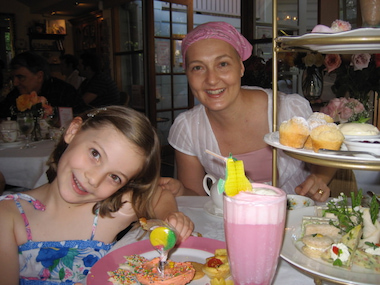
Dealing with a late diagnosis of lymphoma and the challenges post-treatment
Julie faced a diagnosis of non-Hodgkin lymphoma in 2006. Not only was it a late diagnosis, it was “tricky” because she had been getting sick over the course of a year but explaining away the symptoms.
When finally diagnosed, she was told, “if you hadn’t come in today, you had three weeks to live”!
“My systems were shutting down. I had a lymphoma the size of a football in my chest and had somehow been functioning, but very poorly,” said Julie.
“I couldn’t lie flat and was sitting upright in bed at night. I couldn’t finish a sentence without coughing and spluttering. I had recurrent colds and I had a rash all over me.”
“The symptoms can be so subtle or benign that you don’t tend to pull them all together to go, ‘hang on, if you look at the whole big picture, there’s something going on here’.
“Next, because it’s a blood cancer, it’s that whole body treatment experience and chemotherapy was my only option. It was a very intensive treatment phase and I had three little kids.
“While you’re on treatment, you’re working towards a goal, then all of a sudden that’s all gone, but you’re left with the aftermath. That was particularly challenging because of the cognitive deficits, the physical deficits, the physiological changes that have occurred,” explained Julie.
“Your body doesn’t look like your body anymore. I looked like Bert Newton… big moon face, no hair, huge abdomen from all the steroids, and I’d put on a considerable amount of weight, most of which was fluid.
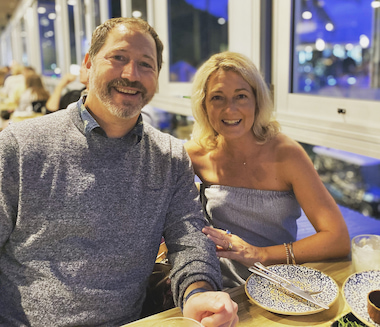
“So there was that sense that my identity had changed as well, and it took two years for me to start looking like myself again, for my energy levels to be a little bit more normal again, and cognitively, for me to be able to function like I had before.
“I felt extremely vulnerable, I didn’t trust my body, and despite my rehab experience, I wasn’t quite sure what to do?
“There was that lack of understanding about what that [treatment] would do to your body and the rehab required to return to the quality of life that I was going to be happy with.
“I’d got a bit smashed. My body didn’t handle it very well and I just didn’t know how to rebuild,” she said.
Julie’s four key learnings from having lymphoma
The four key things Julie said she learnt from her own experience with a blood cancer are:
- Number one – listen to your body. Respect the body and really listen to what it’s telling you. It will show you signs and symptoms, and rather than dismissing things, we have to actually look a little bit deeper.
- Number two – the brain and the body are the most amazing things we have. We have this identity of ourselves, but we live in this beautiful beast of a thing, our body, and our brain is wonderful and can do things that you wouldn’t think possible.
- Number three – slowly but surely, one step at a time, break things down, break bigger goals down into really achievable little steps, and just work very slowly towards each one, so you have multiple little successes over time.
- Lastly – it’s the power of the story and the ability to share what happens to you with other people. As people who have experienced lymphoma or any form of cancer, it’s our job to talk about what that’s like, so we become educators for the entire community.
“It’s educating around what it’s actually like to live with a diagnosis, because you will live with that until the end of your days,” said Julie.
“Once you have that diagnosis, it’s there, and what that means for your lifetime and how it changes things, is important.”
“As a society, we’re all about acuteness of injury or disease, we don’t do ‘chronicity’ very well.”
Julie Allen shares her personal story of her diagnosis in this video.
Returning to work
Julie returned to work, and in 2010 she started her own private physiotherapy practice, the Pentimento Project, which she describes as “providing help, guidance, support and encouragement for cancer survivors to regain their physical, psychological and social health and wellbeing, and a better sense of self”.
“Over the last 12 years, I’ve worked with people at any stage along the cancer continuum, from pre-diagnosis, through diagnosis, treatment, post-treatment, and even palliative care.”
Her interests, her physio practise, and the subject of the different seminars she gives regularly, are based on research findings on cancer rehabilitation and longevity and aging that can improve the length and quality of a cancer patient’s life.
“You don’t want to get through your cancer treatment to just live this existence of ‘I’ve had cancer and now I’m plodding along’,” she said.
The physical and psychological impacts of cancer
Julie emphasises the importance of being aware that the physical effects of having had treatment – fatigue, sleep, pain, peripheral neuropathy, nausea, general deconditioning and muscle atrophy, and nausea – are also impacted by the psychological effects.
And what she has learnt is that “for everybody, it’s completely different”, and “our attitude plays a huge role”.
“Some people may not experience pain at all, but for others it’s overwhelming,” she explained.
“When you’re on cancer treatment, there are many things that are out of your control, and there are certain things we can control in our life – it’s diet and hydration and exercise which is a really powerful combination, it’s getting on top of sleep, and minimising stress.
“I think you do need to take control of the things you can – by putting in the hard work and effort – so that you can have a considerable effect on the physical outcomes that you’re left with after cancer.
“And to get on top of those things from the get-go [diagnosis], and continuing all the way through, the better.
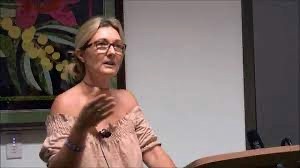
“For some people, diagnosis and treatment is too overwhelming and they’re too unwell to think about those things. But they can still be encouraged in small ways to work on those things and then to focus more on it after treatment.”
Julie gave the example of maintaining some form of exercise or physical activity – having a cardiovascular component to your day – throughout treatment.
“A walk or maybe not staying bed all day but getting up and making breakfast, while in the thick of treatment,” she said.
From a more psychological perspective, “things like visualisation within the treatment period are hugely impactful”.
She gave the example of a male patient of hers, a sailor, who was on a 10-day treatment cycle.
“He would end up bedridden for five of the 10 days because his treatment was so overwhelming. During each of those five days, we’d get the windows open, we’d play the sounds of the ocean, and we’d keep an old rope beside his bed so he could smell his boat. And in his mind’s eye, every single day that he was in bed, he’d practise getting on the boat and setting up the sails… not just watching himself do it but in his mind, doing it. After those five days, when he was able to do things, we’d practise rope tying, lunging, and balance activities, so when he chose not to have any more treatment because it hadn’t been very successful, he was physically able to jump immediately onto his boat and go sailing. Whereas, if he had not done that [visualisation and exercises], he would’ve been so deconditioned, he couldn’t have done it.”
When people tell her, as many do, that they feel so overwhelmed they don’t know where to start, Julie Allen introduces them to the idea of ‘prioritising, planning, and pacing’ when taking the first steps.
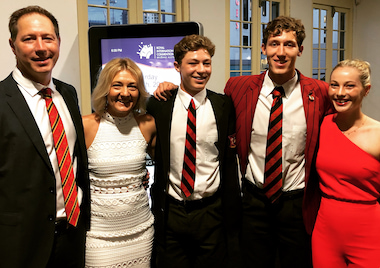
It’s a concept of breaking things down “as a way of taking control and helping to achieve things, and it’s identifying your own personal goals and priorities”.
“For some people, especially if they are on treatment, the priority is, ‘I just need to be able to get out of bed’,” said Julie.
Cancer-related fatigue
To explain the complexity of cancer-related fatigue, Julie’s best analogy is:
“It’s like I’m lying on a beach on a king tide. I know the king tide is coming in and I know I have to move, but I don’t have the energy or the motivation to get up and get out of the way, because it’s just too much.”
“It’s very different from the person without cancer who says, ‘oh, I feel so tired’, or the young mum with a new, young baby who is feeling overwhelmed and tired,” she said.
Why people experience fatigue on their cancer journey is due to cancer-related fatigue being complex, multi-faceted, and caused by several factors:
- the cancer itself can contribute to the fatigue – the process of the cancer
- the cancer and cancer treatment can cause increased inflammatory levels – so the levels of cytokines within the body start to increase, and lower cortisol levels also can affect cytokine levels
- the cancer treatment itself has a hugh impact on how much fatigue a person experiences and how their body metabolises and responds to that
- people may go into cancer treatment with anaemia or other illnesses in the background, which may also contribute to fatigue
- added to the above is a sleep cycle that’s thrown out of kilter by treatment, especially if people are on steroids, and
- other predisposing factors include poor nutrition, being sedentary and lacking physical fitness, or having high levels of stress or pain.
Exercising to treat cancer-related fatigue
According to research over the last 10-15 years, Julie said the gold standard to treating fatigue with exercise is 150 minutes of moderate to vigorous intensity a week – that’s five 30-minute sessions. And “you want to add some strength training” (at least three sessions a week) and “some range of motion or flexibility work as well that incorporates balance activities”.
“But if you write that people will go, ‘I can’t do that. I’m just going to be stuck with my fatigue because I’m so incapable of doing that’.
“So, what I spend a lot of time with people doing is saying, ‘look, this is the gold standard but let’s break it down for you’.
“For some people, they start doing a couple of lots of five to 10 minutes of something, but throughout the day. So, they’re still trying to get towards their 30 minutes, but it might not be in one hit.
“It’s working it out for every person, so, going back to our sailor, his priority was… he just wanted to sail his last days away, so our treatment was all focused on that. Another person might just want to walk to the letter box to get their mail, so that’s where some people start.
“It’s looking at what it is you want to do, working out how we’re going to do that, and working slowly and incrementally towards increasing the amount of time and effort that you can put in to doing that.
“To manage fatigue, you have to be aware of fatigue” and Julie says a good analogy is a bucket of water that represents the amount of energy we have to use in a day.
“Looking at our control list, to fill the bucket we know we can exercise, have a good diet, and sleep – these increase the amount of energy available to us. What takes energy out of the bucket is going to doctor’s appointments, experiencing stress, being around negative people, and not getting enough sleep.
“It’s working out for each person, and for each person to work that out themselves, how much energy they have to use within a day and not pushing beyond that because then if they do, the next day or two they’ll be able to do nothing because they’ll be completely wiped out.
“That’s pacing – working out that tightrope of ‘what is it that I can do today that’s going to leave me with enough energy to do the other things I need to do in the day, and that leaves me with enough energy so that tomorrow I can reproduce it by doing the same again, or maybe do a little bit more.”
To do this is “very easy” says Julie, “once they start focusing on that prioritising, planning, and pacing to work out their fatigue management and get the idea that our bodies have a certain load that we can adapt to, and not to push beyond that”.
“When you push beyond that, people either have no energy left or they end up with an injury, and that’s not uncommon when people finish treatment. They think, ‘oh, I’ve finished treatment, now I’m going to go straight back to the gym’.
“Then I’ll see them because, A, they’ve fallen apart and all of a sudden have completely depleted their energy, or B, they’ve overused or torn muscles because their body was deconditioned and can’t accept the loads it once could,” said Julie.
“What’s needed is education and respect for your body, and listening to the body, then working out an incremental way to slowly and gently increase activities again, working towards that gold standard of 150 minutes of moderate to vigorous intensity exercise throughout the week.
“For people, particularly post-cancer treatment, we know that’s the level we’d love to get them to, to keep their cancers in remission, and if we can attain and maintain that level of exercise, we’re preventing other chronic diseases from coming along.”
The benefits of exercise
The benefits of exercise are so multifaceted because it works on different cells within the body.
“It works on your immune system and reduces inflammation,” Julie explained.
“We know that the more we can reduce the inflammation, the less you’re going to be irritating or stimulating cancer cells, and your body will be better able to fight your cancer cells.
“Exercise in itself improves your treatment tolerance and its effectiveness. It really minimises the deconditioning, reduces the fatigue, improves the quality of life, and absolutely lowers cancer recurrence by keeping your immune system strong and your inflammation down.
“Plus, as already mentioned, exercise decreases the occurrence of other chronic diseases and reduces pain,” she said.
“Exercise is that tool to have in your belt to really improve survival outcomes.”
At the same time, there’s “all the research that’s coming out on diet, in terms of your gut microbiome, and diet combined with exercise partners to achieve all those outcomes”.
Julie said sedentary behaviour – sitting around or lying around all day, office workers included – “is potentially a bigger killer than cancer”.
“Not moving is categorically the worst thing to do”.
“The research shows that people who go on a massive, long bike ride, then go into the office and sit for 15 hours straight have a predicted mortality that is no different and is possibly worse than people who do little bits of exercise all through the day,” said Julie.
“Small efforts at moving are more powerful that one big, long effort before or after a day’s work”.
“Any movement is better than none – like just getting out of your chair.
“Get into the habit of setting a timer and every hour, hop up out of your chair, and move. It is really important,” she suggested.
The importance of diet and hydration
People with cancer need to get on top of their diet, says Julie, and hydration plays a huge role in fatigue.
“If people are quite dehydrated, it will really exacerbate their symptoms,” she said.
On the subject of diet and nutrition, Julie Allen looks at the individual, gives global advice, and “points them in the direction of a cancer-specific nutritionist”.
Her global advice is around avoiding or minimising processed foods and reducing the processed sugars in your diet and watching out for hidden sugars.
“And you absolutely want to be eating fruit and vegetables and improving your hydration – try to hit the marker of six to eight glasses of water a day,” she said.
“Some people who are fluid overloaded stop drinking water, thinking that’s going to help, but it’s actually the worst thing you can do.”
Julie also said that while on treatment, or if your immune system is compromised (you are neutropenic or immune suppressed), it is important to avoid foods that are high in bacteria – “your kimchis, your sauerkrauts, and your kombuchas, and raw foods like sushi and sashimi” that have the potential to harbour bacteria.
“But after treatment, these become the foods that actually can start to settle your gut microbiome back down again.”
Julie also explained that most of the time, when people are on treatment and they become really unwell and end up in hospital, “it’s because of the bacteria within their body – the good bacteria has been absolutely overwhelmed by the not good bacteria”.
“That’s a real challenge for people,” said Julie, so it helps if they also avoid foods with bacteria during treatment.
The role of pain
Julie talks to her patients about pain, which she describes as challenging, “because it’s fear, a lack of confidence in your body, and it can have a big ripple effect”.
“And it can be ‘that thing’ that stops people from exercising,” she said.
“Pain is always real, but people have to have a really deep understanding of what pain is because pain does not necessarily equal tissue damage.”
“It’s an odd concept and I am careful how I talk with a person face-to-face, to explain this.
“Pain is made by the brain; it’s not an input to the brain. I can’t do something to you to make pain. I can, by squeezing your forearm, cause some localised tissue damage, but I can’t actually make pain.
“The localised tissue damage I cause will send a message up to your brain to say, ‘hey, there’s something going on here’. The brain then takes that information, along with your past experiences, your knowledge of pain, and the gamut of existing information it has, and works out whether that tissue damage is going to cause a considerable threat to you. This is all subconscious. Then the brain will decide whether to send a pain message down to the forearm. If it considers it to be a considerable threat, it will send a pain message to the area.”
Julie shared a story about the experience of Australia’s top pain researcher.
“He was out bushwalking, where things like grass, branches, and twigs can brush against your legs as you walk along. This fellow felt nothing, but suddenly he was on the ground convulsing. He was rushed to hospital where he spent a lot of time recovering. He’d been bitten by a brown snake. Eventually, he started bushwalking again. On this occasion, he was talking to someone he described as ‘the most boring person he had ever spoken to’ when he felt something on his leg, and the next minute he was on the ground again convulsing and screaming, ‘I cannot believe it… who the hell does this happen to twice?’.
His body had exactly the same reaction as that previous time he’d been bitten by the snake. Luckily, he was walking with two medical officers. They went over to him and said, ‘get up you idiot, you’ve got a scratch on your leg from a branch’.”
“His brain, without his knowing, had processed that information – the scratch – as a credible threat; been here before, this is what’s happening, you’re down and you’re out for the count,” said Julie.
“It’s a lovely analogy of how if we feel pain, it’s not a true reaction of what’s happening, but it’s always protective.
“Pain is something that we can work on with people. A lot of it is about education around pain and how that works.”
“For many people their pain is overprotective, particularly when they’ve had cancer.
“Your body has been under threat, it’s been under duress, and your brain is there to protect you. It’s on high alert and in terms of pain, it becomes an amplifier, so something that previously caused low levels of pain for you is different when you’ve had cancer and treatment. You’re on full volume and you’ll hear that pain message loud and clear the whole time.
“It’s also related to your sympathetic nervous system which gets put into overload, so your body has extreme fright, flight or fight reactions to minimal things that are happening,” said Julie.
She explained that strategies can be taught to desensitise the nervous system by retraining the bioplasticity in the brain.
But first, she said, “if you have pain, make sure you seek medical advice to check if there is something actually happening at a cellular or tissue level that needs to be dealt with”.
“Desensitisation of the brain tissue around pain is not hard,” said Julie.
“Relaxation and stress management strategies are used to reduce your sympathetic overload. The toolbox I pull out for people is meditation, mindfulness, breathing exercises, and graded motor imagery*.
“All pain can be managed, even if people have extreme pain.”
“Of course, there might be a moment where there will be pharmacological input as well, and that will be driven by the doctors. We tend to work well together in reducing that as much as we can, as quickly as we can,” said Julie.
Rest and relaxation for recovery
Recovery is important and that’s where rest and relaxation are important tools.
“Active rest and relaxation, incorporating breathing exercises, are imperative because it gives us time to let our bodies recover from the exercise that we might be doing, and it gives us time to listen to our bodies,” said Julie.
“If people are listening to their bodies, they will feel the need to take a nap or a sleep in the day.
“Even though their sleep at night might be terrible and their ultimate goal is to have a good night’s sleep, I’m an advocate of taking time out and having that nap but be in control of the time of that nap.
“Recovery is important from a tissue point of view too. The tissues actually need time to recover after we’ve exercised, so it’s really important to include rest in our days as well.”
Julie made the distinction between mindfulness and meditation.
“Mindfulness is more of an incorporation within your day of paying attention to a task that you’re doing at any given time,” she said.
“Meditation is a really effective tool in terms of both rest and recovery, and it’s something that I encourage patients to do daily.
“Everybody’s sense of meditation is a bit different and there are so many different types of meditation.”
Julie said that for some people, it may be a breathing exercise, or saying their prayers before going to sleep, or repetition of an affirmation, mantra, or prayer. Others like to follow a more conventional or traditional system of meditation where they work through the body, concentrating on different areas as they’re doing breathing exercises, and more advanced meditators may have that moment where they actually clear the brain and think of nothing.
“There are lots of tools that can be helpful – literature online and in books, and apps that are particularly effective if people like their technology; they can be guided through a meditation.”
What a typical day looks like for Julie
When asked what activities Julie incorporates into her day, she said she always starts her day with some form of exercise at home – resistance-based exercises or breathing exercises and a few stretching/flexibility type exercises like yoga.
“From a dietary point of view, I eat three meals a day and make sure I have a good proportion of fruit and vegetables with every meal. Then I head off to work and do all those juggling things you do at work during the day.
“I always try and make sure I get some sort of cardio exercise in my day. I’ve always been an avid skipper, but also walking or swimming. If I’m at the beach, I get outside as much as I can and go for big, long walks, big, long swims or I go for a hike.
“I have at least two days in the week where I might not exercise at all, and that’s okay because that’s my recovery, to give my body a chance to just do nothing and not have any extraneous stress on it.
“Since treatment, sleep has been my area of struggle, even after all these years. So, I make sure I follow a routine where I have downtime. I’ll either watch a program on TV or read a book, then have a shower and hop into bed. I run through a meditation that I do at night, then say prayers, and I’m in such a routine now that I will shut my eyes and sleep will come.”
Julie said it’s taken her a lot of work to get there and “I could still have improvements with my sleeping. I could go to bed earlier… but no one is perfect”.
* Graded motor imagery is a set of treatments that are used to help reduce pain and improve the ability to move the hand, wrist, arm, or any other part of the body affected by persistent or wide-spread pain.
Listen to the Talking Blood Cancer podcast, Coping with lymphoma and motherhood, where Julie Allen discusses how she coped with a blood cancer diagnosis as a young mum, and shares some insights and expertise on the importance of exercise as a treatment for cancer.
Last updated on April 14th, 2024
Developed by the Leukaemia Foundation in consultation with people living with a blood cancer, Leukaemia Foundation support staff, haematology nursing staff and/or Australian clinical haematologists. This content is provided for information purposes only and we urge you to always seek advice from a registered health care professional for diagnosis, treatment and answers to your medical questions, including the suitability of a particular therapy, service, product or treatment in your circumstances. The Leukaemia Foundation shall not bear any liability for any person relying on the materials contained on this website.